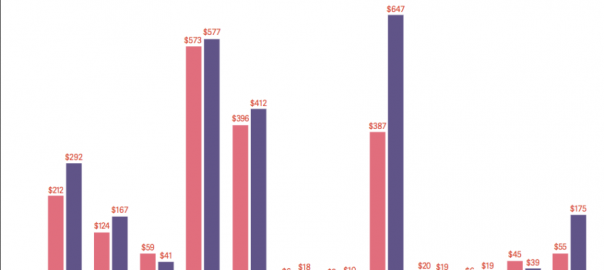September 26, 2016
With the explosive growth of online businesses and eCommerce stores, there are more than 300 payment schemes in the world. The global eCommerce market is also expected to hit 2.4 trillion dollars by 2019. This does not make it easy to choose the right payments for your website, especially when you are a beginner. It can be tricky and without any knowledge, you could choose a solution that’s not as affordable as you first thought. Read on to learn more about online payments.
Today, the entire retail industry is digitized and customers have greater expectations. You need to know details about the payment system you offer.
But first: why do you need online payments?
The simplest answer is because online payments help you sell items or services online faster and more conveniently for both you and your customers. To start accepting payments on a website, you need a merchant account and a payment gateway. If you already have an eCommerce website, there are other issues to focus on.
Traditional payment methods include credit cards, debit cards, and bank transfers. In 2014, the number of cards with a payment function increased to 766 million in the EU. The amount of card transactions was 47.5 billion, with a total value of 2.4 trillion dollars.
 Source: Global payments report preview, Worldpay, November 2015
Source: Global payments report preview, Worldpay, November 2015
Yet, people prefer alternatives or local payment solutions. The landscape of alternative payments has evolved and is set to claim 55% of eCommerce turnover by 2019. Before you add payments to your website, ensure which payment methods your target market prefers.
Find out how your target audience prefers to pay. Get to know which are the best payment methods for them and which options you should implement at your online store. Offering multiple payment methods on your website could have an impact on the conversion rate and the number of sales. Keep in mind that lacking some payment methods at an eCommerce store could be a reason for cart abandonment. You should always have the customer’s needs in mind.
Online payments are convenient for customers. They pay for goods and services in seconds without even realizing the entire process. In fact, after making a purchase the payment process begins and it’s about encryption, authentication, authorization, settlement…
Let’s take a closer look at how the process works.
What is a merchant account?
When you sell online, you need an eCommerce merchant account. It’s a special bank account where the funds captured from card sales are held before transferring to a regular bank account. When a customer finishes their purchase, the payment is not immediately transferred to your bank account, but they’re captured by a special bank account first. This special bank account is called a merchant account.
With a merchant account, you can accept payments through different channels such as an eCommerce website or mobile devices (even in a brick and mortar store). There are many types of merchant accounts and it depends on your business model. To set one up, you need to sign a legal agreement between you and the issuing bank. You also need to prepare for the underwriting and approval process.
Many providers offer a merchant account with payment gateway. This means you don’t have to go through the complicated process on your own (the cost of getting a merchant account yourself is often higher and the process could take much longer).
Speaking of payment gateway…
Once you have a merchant account, it’s time to find a payment gateway. What is it? The gateway takes all the credit card details that customers type in on your website and transfers it to the processor to get the funds released to the merchant account. The payment gateway allows you to connect your website to the payment processor. It authorizes cards and electronic payments by encrypting the sensitive data. That’s how the customer’s money gets into your merchant account.
Note that even when you choose a payment gateway, the provider will probably ask you to open your own merchant account (it usually depends on the value you process).
You also need to know that not all businesses need a dedicated merchant account, especially when they process small amounts of money. They can choose a payment gateway with an aggregated account with funds and payments from several merchants. It’s also one of the easiest ways to start accepting payments on your page. Services that offer an aggregated account process payments through their own merchant accounts on behalf of merchants.
A time to prepare
Choosing a payment gateway and getting a merchant account can take longer to set up, but it comes with more flexibility. It will take 2-4 weeks before you acquire an internet merchant account, so plan to have everything completed before the launch of your online business.
Moreover, find a payment gateway with a clean and flexible API. It could be more expensive, but will save you time and money in the end. It’s crucial, especially when you’re processing large amounts of money.
When you want to process credit or debit card payments on your website, you need to remember that there are other players, such as the Card Associations (e.g. Visa, MasterCard) and the Payment Card Industry, known as PCI. There are also rules and regulations you need to follow to protect customers’ data. Note that there are payment gateways that take responsibility for PCI issues, so you don’t have to be PCI compliant.
What’s next?
Now you have a merchant account and you’ve chosen a payment gateway that meets your needs. How are payments going to be processed on your website?
The entire payment process is complicated and can be hard to understand at first, even though it takes just 2 seconds! Let’s see a short version of what’s behind the ‘Pay’ button.
After a customer submits a payment, it needs to be authenticated to eliminate fraud. There is also an authorization which comes with a request from the payment processor to the issuing bank to authorize the amount. The issuer checks if a customer has enough money to make the purchase. Then, they send back the information to the payment processor (approval or decline).
The authorization also comes with protection. All sensitive data is encrypted so even if it leaks it will be meaningless for cyber criminals.
Note:
Encryption is set as a standard in PCI compliance and helps to encode transactional data, so online payments and customers’ data are secure. It’s better to choose a payment provider which is PCI compliant to avoid unexpected fees and to eliminate the risk of fraud. Keep in mind that every business has to be PCI compliant if they accept or store cardholder’s data.
If everything’s fine, the issuing bank sends the funds to your acquiring bank (a banking partner for business). The next step is depositing the funds by the acquirer into your merchant account (it could take a few days).
The whole process in a nutshell:
You sell the item —> payment is processed —> issuer debits the funds from customer’s account —> acquirer deposits the money into your account.
Seems easy, right?
Major differences between online and offline payments
The most important difference between the two types of payments is the user experience. Everyone knows that when you want to pay in a brick and mortar store, you need to give the seller cash, a debit or credit card, or e.g. use your smartphone. When you buy something online, you don’t need actual money, but have to enter the payment information into the payment form. This could be the credit or debit card number, CVV, expiration date and any other information needed to authenticate the purchase.
When you pay in a physical store by card, the backend process looks similar to an online payment process. The data is transferred through a payment gateway. Then the payment processor or acquirer processes the data and communicates with the issuing bank to make sure the transaction can be completed. When the payment is authorized, the transaction can be completed successfully.
Still, many people don’t shop online because they fear losing their money by fraudulent activity. You need to do everything to offer the most secure online payments and lower the risk of fraudulent activity. This will encourage people to buy at your eCommerce store.
Here is what you need to start processing payments on your website:
- Open a dedicated merchant account yourself
- Choose a payment gateway with a merchant account attached to it
- Find alternative payments
Now it’s the time to find the right payment solution for both you and your customers. Make paying smooth and easy to reduce the number of abandoned shopping carts and increase conversion rates. Have a choice between different payment methods and a customer-friendly checkout. The entire payment industry is changing dramatically. If you want to stay competitive, payments on your site should be quick, simple, well-designed and available on any device.
Would you like to add something? Don’t hesitate to leave a comment.
Business & Finance Articles on Business 2 Community(142)







